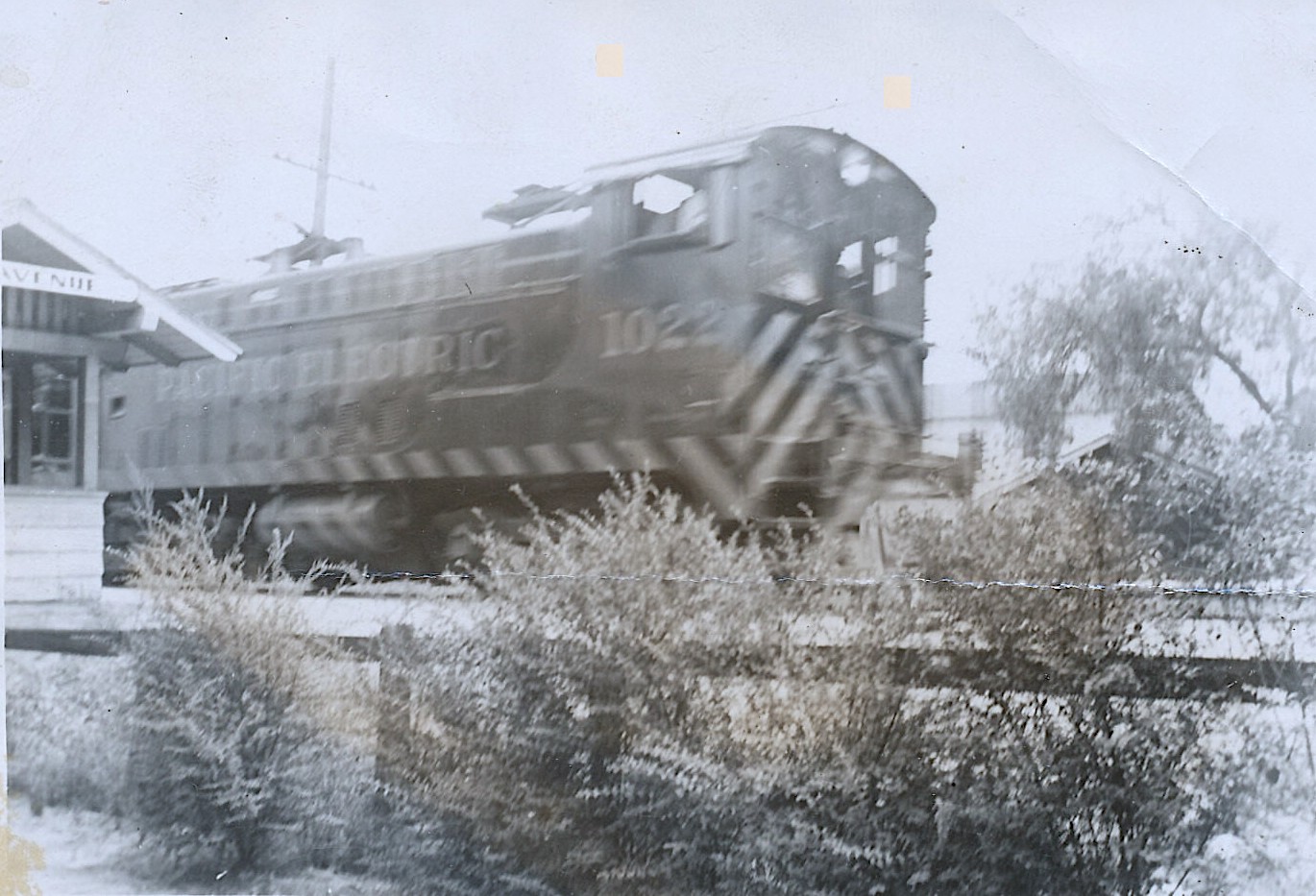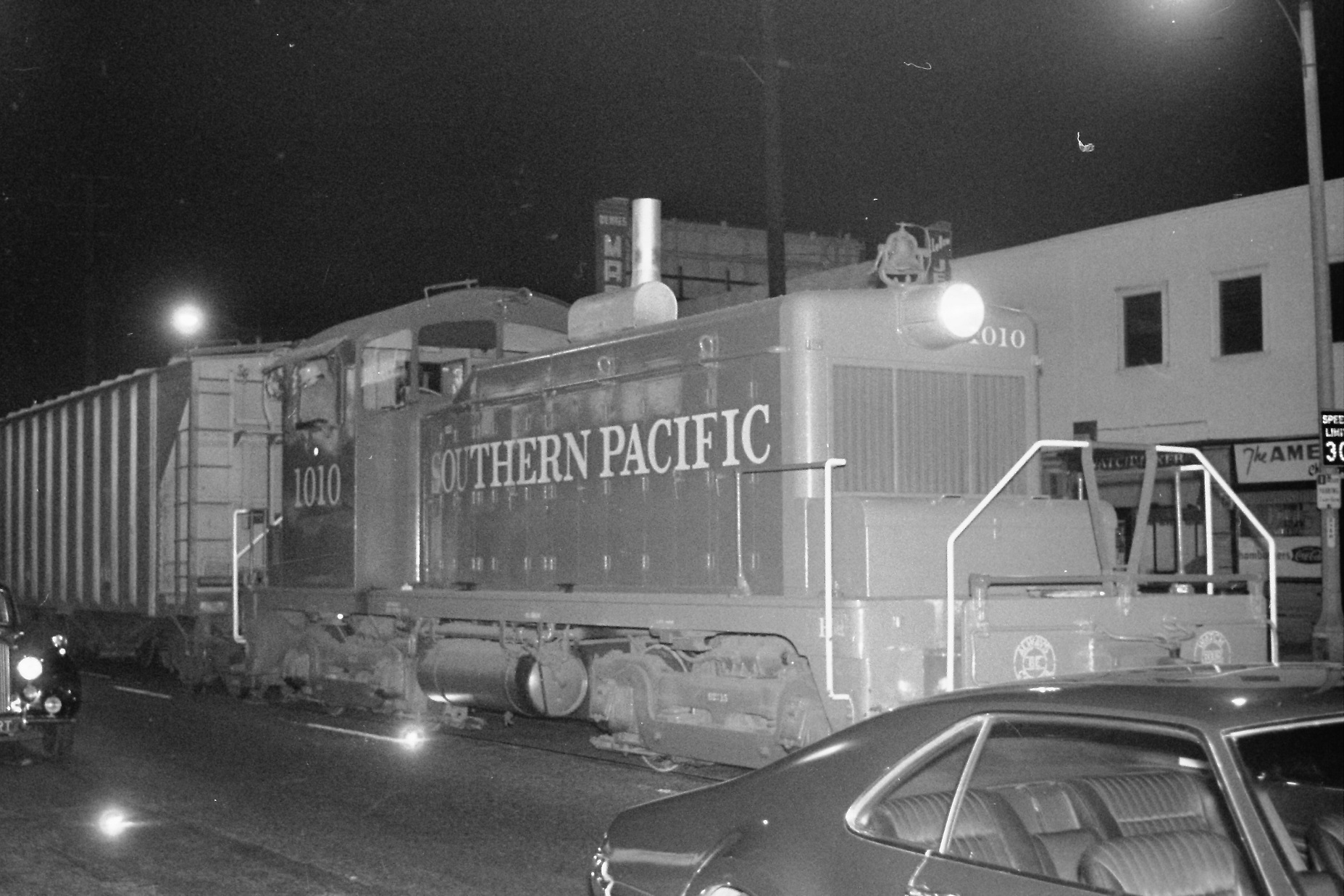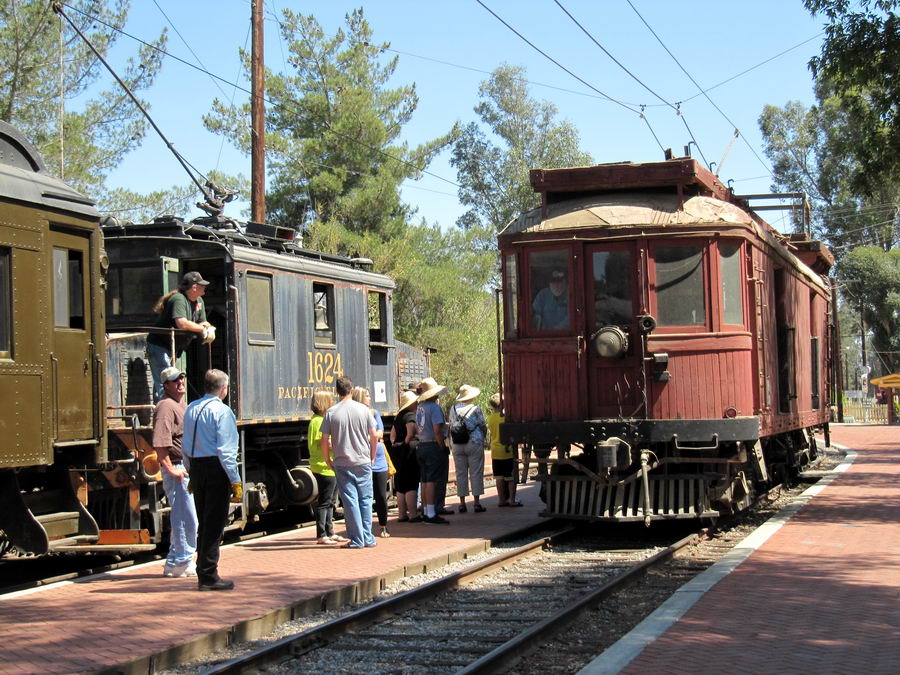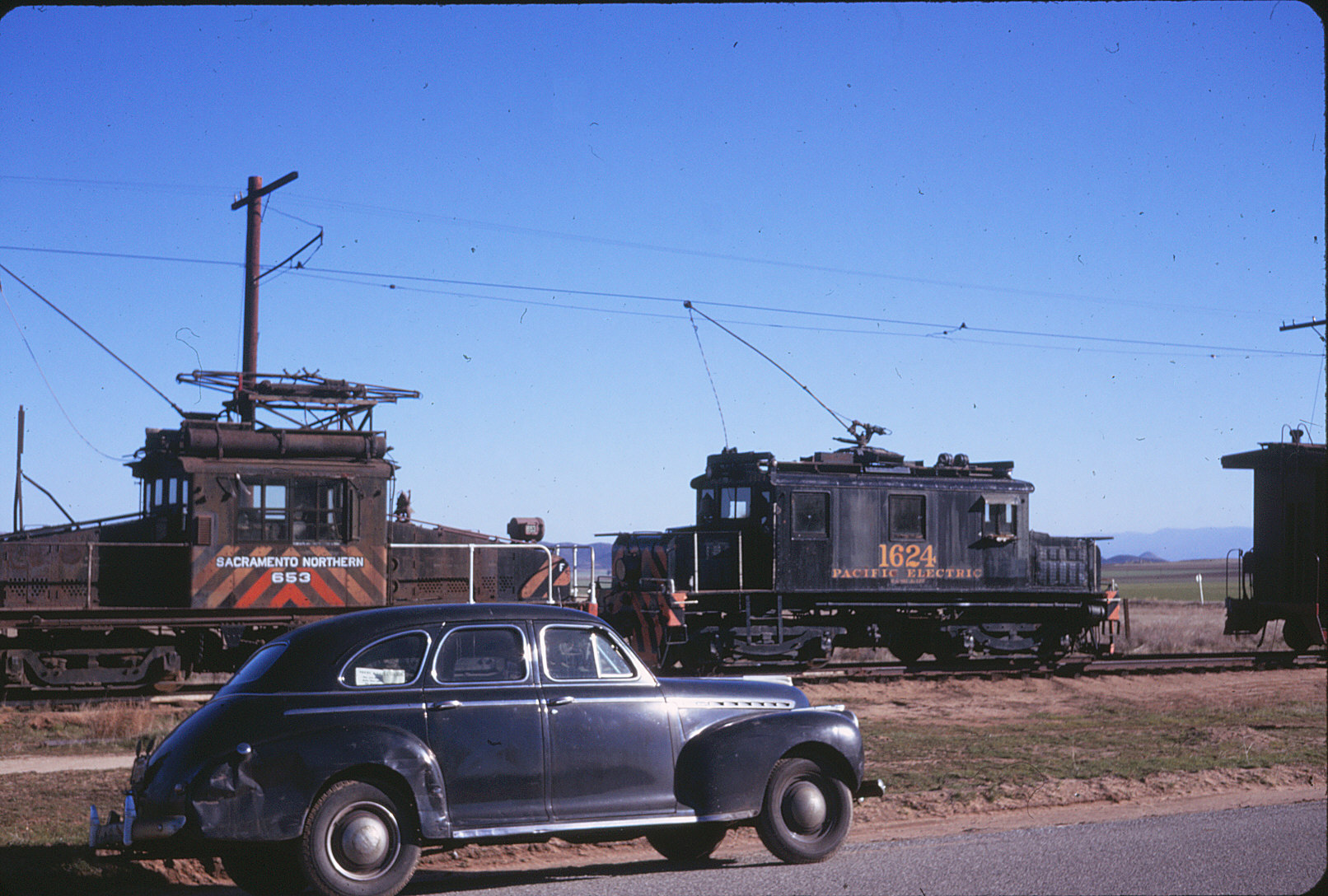Riding Pacific Electric #1624 Down Memory Lane(by Bob Davis of Southern California)
Pacific Electric #1624 at Orange Empire RR Museum (Bob Davis photo) |
|||||
|---|---|---|---|---|---|
|
When Pacific Electric needed more freight motors as business grew in the 1920s, they asked
for a quote from Baldwin-Westinghouse, which had supplied all of their heavy motors from 1601
to 1618. The bid was so high that the management of Torrance Shops said that they could build
an equivalent unit at a lower cost. PE wound up with 13 "home brew" motors (#1619-1631) that
looked like B-Ws but had General Electric motors and controls, thus being closer to a Sacramento
Northern 650-class. Some of the heavier iron work was farmed out to Llewellyn Iron Works, a
long-established heavy industry in Los Angeles. As originally built, the 1619 class didn't
have M/U capability, but in 1945 they were equipped with M/U components from ex-Portland box
motors. Both the B-W and the home-made motors served well for many years, hauling citrus,
rock products and petroleum products throughout the LA Metro area and into the Inland Empire.
But 1943-44 saw PE acquiring its first diesels, 1650-1654, GE 44-ton center-cabs.
I remember seeing one of these on the Monrovia line one night, and figured it was a new electric
locomotive because of the trolley pole, which I learned many years later was for actuating
the grade-crossing signals through a contact on the trolley wire and did not power the unit.
Another thing I learned was that the GE 44-tonners were at the outer limits of their capability
on the gravel trains. Heavier diesels soon took over, including Baldwin VO-660s 1021 and
1022, VO-1000s in the 1320 series, and SW-1s in the 1000 series. (note that I didn't know
the model numbers in those days, but as a "junior train-spotter" remember the road numbers.)
A once-a-year treat was the Clyde Beatty Circus train--in 1950, it was powered by 1621 and
1619, and in 1951, by a diesel in the 1320 series. There was no circus train in 1952--the
track had been lifted.
70 years ago last week, most of the PE Monrovia-Glendora line was abandoned. Some segments
of track were retained for diesel-powered freight service, but electric passenger service
would not return until July 2003 to Pasadena, and March 2016 to Monrovia and Azusa.
 Here's a photo my mother took in 1950; note that the locomotive is lettered for PE. Also note the "dummy" trolley poles. As a ten-year-old boy, I thought that the engine was idling and the motors were powered by the overhead, an impression conveyed by the low RPM of the Baldwin engine. It's westbound at 5th Ave., the dividing line between Monrovia and Arcadia. I'm not sure, but I think the gravel train started running in the afternoon after the use of diesels allowed it to go from the Northern District to the Southern District on non-electrified track, avoiding street running in downtown LA. The electric locomotives hung on until 1956. They had already vanished from the Northern District when the wires were de-energized in 1950-51, and after 1956, only two remained in service. They ran on the Santa Monica Blvd. track in Hollywood, switching various industries. The PE franchise for Hollywood required electric motive power within LA city limits. #1622 and 1624 were kept at the West Hollywood yard, and when the crew arrived from Beverly Hills, they'd turn on the substation, pump up the air and go to work. This was usually late at night, and the job was unofficially known as the "Midnight Switcher". The city of LA finally agreed to let PE use diesels, provided they were equipped with exhaust mufflers and interurban-style air whistles. #1622 went to scrap, but #1624 was saved by the Los Angeles chapter of the National Railway Historical Society in 1958. In 1960 it went to what was then Orange Empire Trolley Museum in Perris. The Museum was and is a volunteer operation. I joined in 1963, and remember an article in "Westways" (the Automobile Club of Southern Calif. magazine) around 1965 telling readers about this place out in the boondocks where some of the old Red Cars and Yellow Cars ran on a short section of track. The trolley wire was energized by Cummins-GE genset, which could power one or two streetcars before it bogged down. The author mentioned that on special occasions, the members would power up the 60-ton PE locomotive, and run it up and down the tracks, commenting, "This is heady wine for trolley buffs." 
 Fast forward to 2009, as #1624 meets PE #00157 at Alpine Dr. on the SCRM main line. I was running the tower car, built by PE in their Los Angeles Shops before the Torrance facility was constructed. Both 1624 and 00157 went by my house in Monrovia in the late 1940s. Photo believed to be by John Smatlak. Running the PE tower car was a boyhood dream come true. 
An automotive relic, the 1941 Chevy that had been in the family since it was new.
Photos and text from Bob Davis on 4 October 2021 |
|||||
